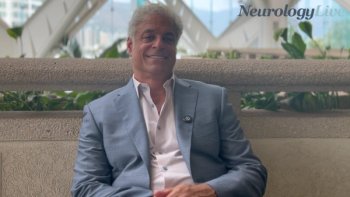
FDA Adds Boxed Warning, Narrows Indication for DMD Gene Therapy
Key Takeaways
- The FDA approved labeling updates for delandistrogene moxeparvovec-rokl, including a boxed warning and treatment restrictions for ambulatory patients aged 4 and older with DMD.
- Sarepta paused distribution for nonambulatory patients after fatal acute liver failure cases, prompting the FDA's safety review and labeling changes.
The agency has required a postmarketing observational study to monitor safety for at least 12 months following gene therapy treatment in patients with Duchenne muscular dystrophy.
The FDA has approved safety-related labeling updates for
The determination is a result of a CBER (Center for Biologics Evaluation and Research) Safety Communication issued by the FDA in June, which reported 2 fatal cases of acute liver failure in nonambulatory pediatric boys treated with the gene therapy. Responding to these events, Sarepta voluntarily
In both cases, the patients developed markedly elevated liver enzymes and required hospitalization in 2 months of delandistrogene moxeparvovec-rokl infusion. An additional serious nonfatal case of acute liver injury, involving complications such as mesenteric vein thrombosis, bowel ischemia and necrosis, and portal hypertension, also contributed to the agency's review.
“We want to thank the FDA for their thorough and collaborative review. Completion of the safety labeling change for ELEVIDYS will ensure that families and healthcare professionals have clear information, supported by a Medication Guide, to help understand these updates and guide treatment decisions,” Louise Rodino-Klapac, PhD, president of research & development and technical operations at Sarepta, said in a statement.3
After completing a comprehensive review of available safety data, the FDA approved several substantial revisions to the delandistrogene moxeparvovec-rokl labeling. These updates included the addition of a boxed warning outlining the risk of serious liver injury and acute liver failure, including fatal cases, and a revised indication limiting use to ambulatory patients with DMD who are at least 4 years of age with a confirmed DMD gene mutation.
READ MORE:
The agency also removed the indication for nonambulatory patients and added a limitations of use statement to support clinical decision-making. Further changes were made across multiple sections of the prescribing information, including warnings and precautions, dosage and administration, adverse reactions, use in specific populations, clinical studies, and patient counseling information. The FDA noted that the updated labeling incorporates a new medication guide for both patients and their caregivers.
Furthermore, the revised labeling for delandistrogene moxeparvovec-rokl included several updated safety and monitoring recommendations. Patients are advised to undergo weekly liver function testing for at least 3 months after treatment and to remain near an appropriate medical facility for 2 months following infusion. The labeling instructs patients to seek prompt medical attention if they develop jaundice, miss or vomit corticosteroid doses, or experience changes in mental status.
Because corticosteroid therapy may suppress immune function, the risk of infections and associated complications, including death, is noted. Weekly monitoring for cardiac injury using troponin-I testing is recommended for 1 month after treatment. Delandistrogene moxeparvovec-rokl is contraindicated in patients with deletions involving DMD exons 8 and/or 9, and it is not recommended for use in individuals with preexisting liver impairment, recent vaccinations, or recent or active infections.
The FDA has also required Sarepta to perform a postmarketing observational study to further evaluate the risk of serious liver injury associated with delandistrogene moxeparvovec-rokl use. The study is expected to enroll approximately 200 patients with DMD and will follow participants for a minimum of 12 months after treatment. During this period, patients will undergo periodic liver function assessments to support ongoing safety monitoring.
REFERENCES
1. FDA Approves New Safety Warning and Revised Indication that Limits Use for Elevidys Following Reports of Fatal Liver Injury. News release. U.S. Food and Drug Administration. November 14, 2025. Accessed November 14, 2025. https://www.fda.gov/news-events/press-announcements/fda-approves-new-safety-warning-and-revised-indication-limits-use-elevidys-following-reports-fatal?utm_medium=email&utm_source=govdelivery
2. FDA Requests Sarepta Therapeutics Suspend Distribution of Elevidys and Places Clinical Trials on Hold for Multiple Gene Therapy Products Following 3 Deaths. News release. FDA. July 18, 2025. Accessed July 18, 2025. https://www.fda.gov/news-events/press-announcements/fda-requests-sarepta-therapeutics-suspend-distribution-elevidys-and-places-clinical-trials-hold
3. Sarepta Announces FDA’s Approval of Updated ELEVIDYS Prescribing Information. News release. Sarepta. November 14, 2025. Accessed November 14, 2025. https://investorrelations.sarepta.com/news-releases/news-release-details/sarepta-announces-fdas-approval-updated-elevidys-prescribing
Newsletter
Keep your finger on the pulse of neurology—subscribe to NeurologyLive for expert interviews, new data, and breakthrough treatment updates.



































